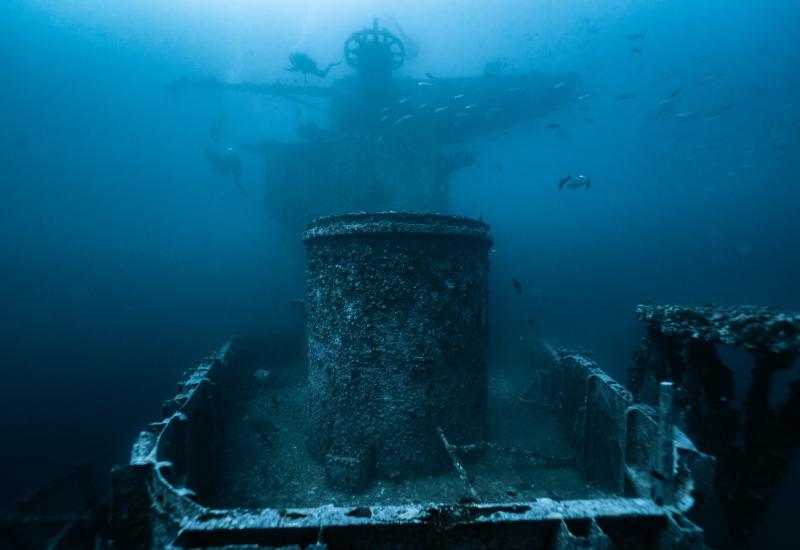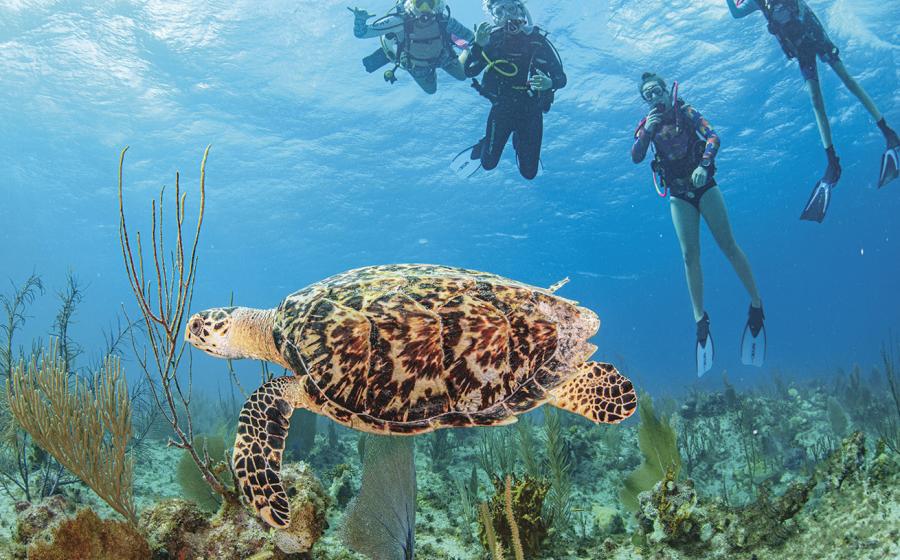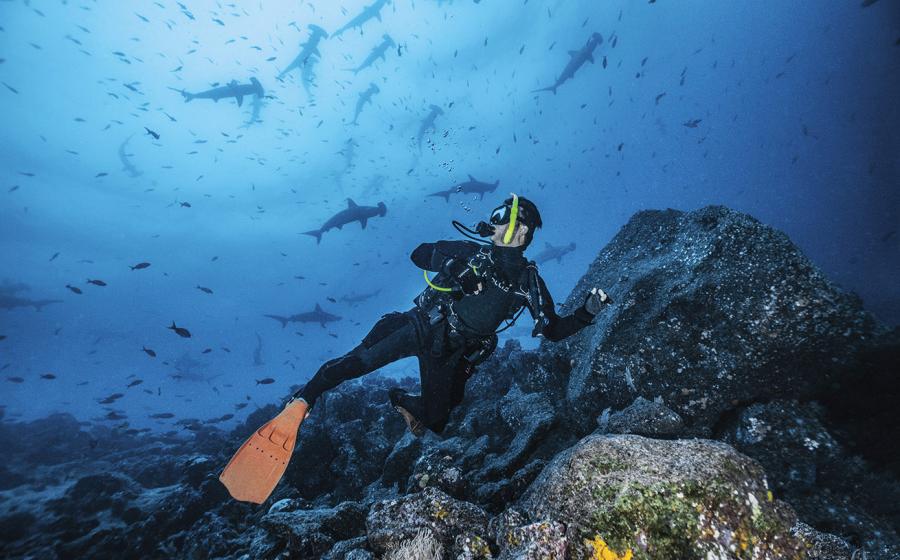Central Florida Endless summer?
No endless springs
As I shrugged my pretty ancient tec BC off after an early-morning cave dive, a little nubbin of nylon bounced off and landed on my toe. It was the swivel for one of my straps, hors de combat after something like a decade of sun, sand and soakings. Still in my farmer john, I hopped into the truck and drove two minutes up the white-sand roadway to the Ginnie Springs Outdoors dive shop, a PADI 5-Star facility (www.ginniespringsoutdoors.com). They didn't have the exact part (I wouldn't have expected them to the BC itself hasn't been made for something like eight years), but it took them only about 30 seconds to come up with something that would work. So, my next dive salvaged, I popped into the deli next door and ordered an "Ed-Make-a-Muffin," made by Ed personally and delivered with a smile. As I drove back down the lane to Devil's Eye Spring, it struck me that I had just been given first-class service twice. And I was on my way to dive one of the most famous caves in the world. "Visibility forever" is how Jacques Cousteau described conditions at Ginnie Springs; in the early morning, even the main spring basin there offers clarity that makes most swimming pools look turbid in comparison. Yet unlike most swimming pools, the Ginnie Springs head pool has plenty to look at: a variety of sunfish and other freshwater fish (including the occasional gar), sunken cypress logs harboring a plethora of creatures, and huge alligator snapping turtles that hop away from approaching divers on their rear fins, looking like the ballet-dancing hippopotami in Walt Disney's Fantasia. The real attraction at Ginnie Springs is the Ballroom, though; at approximately 60 feet deep, it's one of the few caverns in Florida that open-water divers are allowed to enter with lights. About 70 feet wide, silt-free, spacious and equipped with a guide rope that leads to the exit, this place has whetted the appetites of legions of would-be cave divers. Every year, many people make the journey from wanna-be cave divers to actual cave divers by completing cave training at Ginnie, either with the resort's own staff or through independent instructors who use the facilities. Three riverside springs Devil's Ear, Devil's Eye and Little Devil have probably seen more divers through their cave training than any other cave system in the world, and hot showers and a changing room are just 100 yards away. Nondivers can swim, snorkel, canoe or tube in what the operators call a "natural water park," and when the sun goes down, visitors can either camp on the resort's property or find a hotel in High Springs, just a 10-minute drive away. Established in 1976, Ginnie Springs is far from the only such operation in Central Florida. Both Blue Grotto (www.divebluegrotto.com) and PADI dive center Devil's Den (www.devilsden.com) are within three miles of the town of Williston, and both are natural limestone sinks. Blue Grotto's cavern is the largest in the state the opening alone is 20 by 80 feet and Devil's Den is known for the fossils in its limestone walls. Both facilities offer open-water diving exclusively. Fossils are also part of the attraction at Hal Watts' 40-Fathom Grotto (www.mrscuba .com), but only part; the site also offers amazing depth. With the bottom at 240 feet, all divers must be accompanied by facility-approved dive guides or by dive professionals who've received facility approval. The 40-Fathom Grotto is about 15 miles northwest of Ocala; nearby divers will find Paradise Springs (www.geocities.com/paradisespringsfla), where a 20-foot pool is the entry to a large cavern more than 100 feet deep, with fossils such as a large set of ribs protruding from the limestone wall. Small and picturesque, it's a tranquil setting for a very different sort of dive. At PADI dive center American Pro Diving Center (www.americanprodiving.com), near Crystal River, you're taken straight to the diving, including divemaster-guided trips to springs in the Homosassa Springs Wildlife Park, where manatees frequently approach snorkelers and roll over for a belly-scratch. For a complete listing of Florida spring sites, see Ned DeLoach's Diving Guide to Underwater Florida. Most temperatures average around 72ºF, calling for a medium-weight wetsuit and hood for scuba divers and a drysuit for cave divers. Cave diving requires training beyond the recreational-diver level; for information on cave training, see www,nsscdstraining.com or www.safecavediving.com.
30 Years of Clarity
The water coming out of north-central Florida's freshwater springs fell to earth close to 4,000 years ago; the cave and cavern apertures at Ginnie Springs were certainly there when Columbus was still playing with boats in the bathtub. Today these 200 wooded acres along the Suwannee River are accessible to both cave divers and open-water divers, thanks solely to the folks who founded Ginnie Springs Outdoors back in 1976. It was called Jennie Springs before '76, but "gin-clear" had been used so often to describe the catch-me-I'm-in-air visibility that a change of spelling seemed not only logical, but practically inevitable. Improvements are always made with preservation of the area's natural resources in mind it's obvious at first glance why Ginnie Springs is the most popular place in the world for cave-diving training. And for 2006, a year-long 30th-anniversary party is celebrating that fact. MUST DIVE
1. Ginnie Springs 2. Devil's Eye Spring 3. Devil's Den 4. Blue Grotto 5. Paradise Springs









